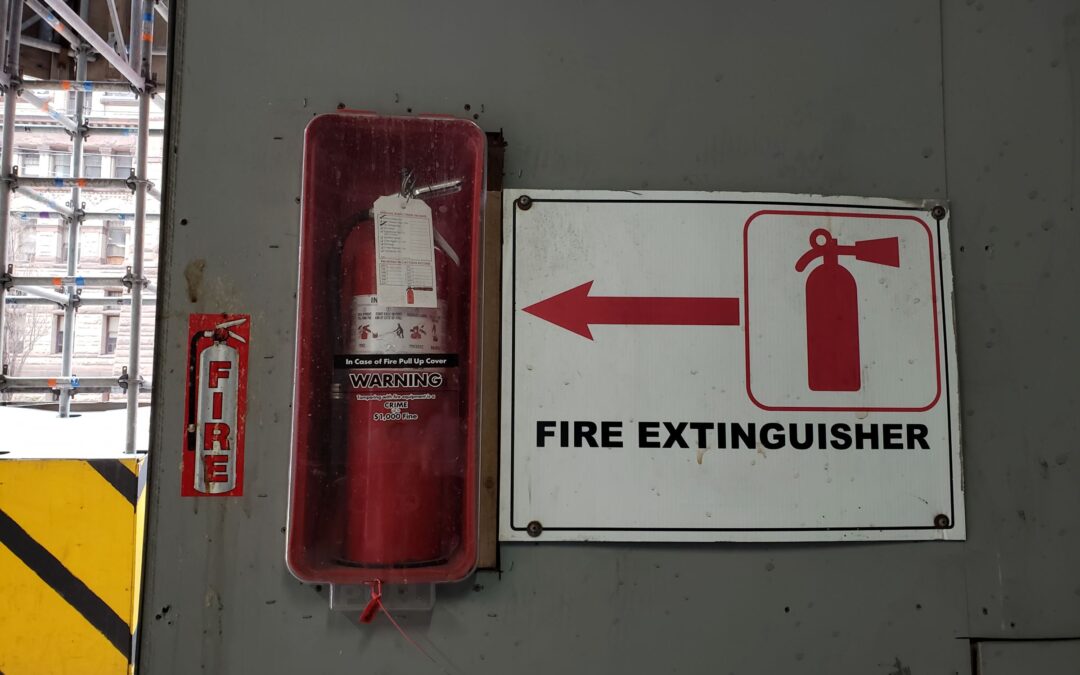According to OSHA standards, employers are responsible for inspecting all portable fire extinguishers. Fire extinguishers must be inspected annually by trained professionals. When a new unit is installed, OSHA requires monthly inspections that designated employees can conduct. Check fire extinguishers more frequently if installed in locations prone to damage or harsh temperatures.
To inspect a fire extinguisher, follow these steps to ensure that the extinguisher is functioning correctly:
- Ensure the fire extinguisher is in its designated place, easily accessible, has signage indicating its location, and has a valid maintenance tag.
- Ensure the nameplate is visible and facing outwards.
- Check the pressure gauge and ensure it reads in the green zone. This indicates that the extinguisher is pressurized and ready to use. The extinguisher should be replaced or refilled if the gauge is in the red zone or shows no pressure.
- Examine wear and damage on the hose, nozzle, discharge handle and pressure gauge. The fire extinguishers’ nozzle and hose should be free of obstruction and damage, and the discharge lever should be free of dirt and corrosion.
- Any signs of wear or tear should be addressed immediately to ensure the extinguisher can be used effectively in a fire.
- Ensure the safety pin and tamper seal are intact, confirming that the extinguisher has not been tampered with or used since its last inspection. If the safety pin is missing or the tamper seal is broken, the extinguisher may not be reliable in an emergency.
- The extinguishing agent inside the fire extinguisher should be at the proper level and not expired. Most fire extinguishers have a tag indicating when they should be refilled or replaced, and this information should be followed to maintain the extinguisher’s effectiveness.
- Test the locking pin and ensure the unit is pressurized; place your thumb over the pin and press down gently, then remove your thumb. The pin should pop back up immediately. A pin that rises slowly indicates the fire extinguisher is losing pressure.
- Sign and date the annual maintenance tag and create an inspection report. The back of the tags may include instructions and additional inspection records.
- The NFPA requires hydrostatic testing every 5 to 12 years by a certified inspector.
It is crucial to maintain thorough records of all fire extinguisher inspections over the past 12 months. This involves documenting the location of each extinguisher, the date of each inspection, any identified deficiencies, the steps taken to resolve the issues, and the name of the person who conducted the inspection. Maintaining comprehensive records ensures that all fire extinguishers are well-maintained and easily accessible during audits or emergencies.
Fire safety is everyone’s responsibility, and proper fire extinguisher inspections are crucial in keeping people and property safe from fire dangers.
As always, stay safe out there!


Recent Comments